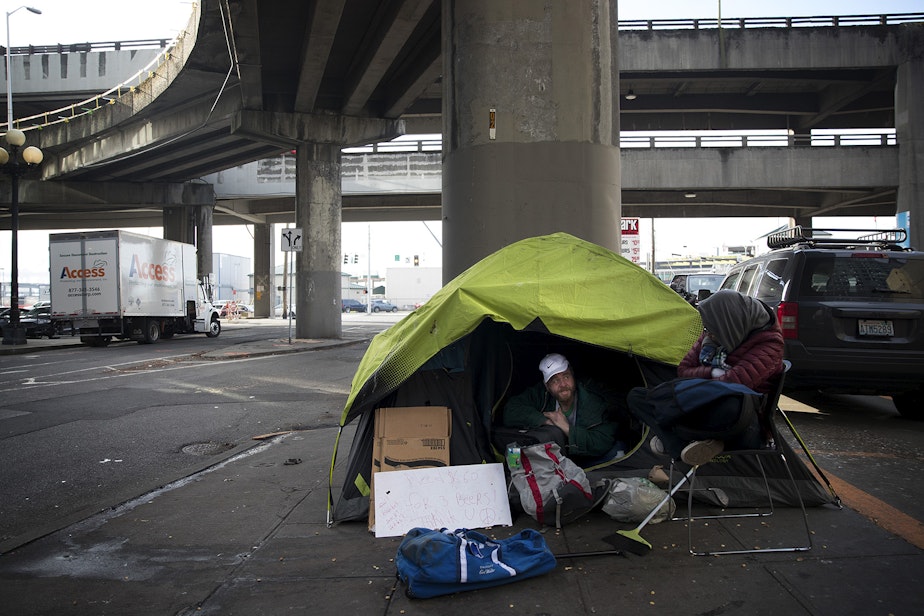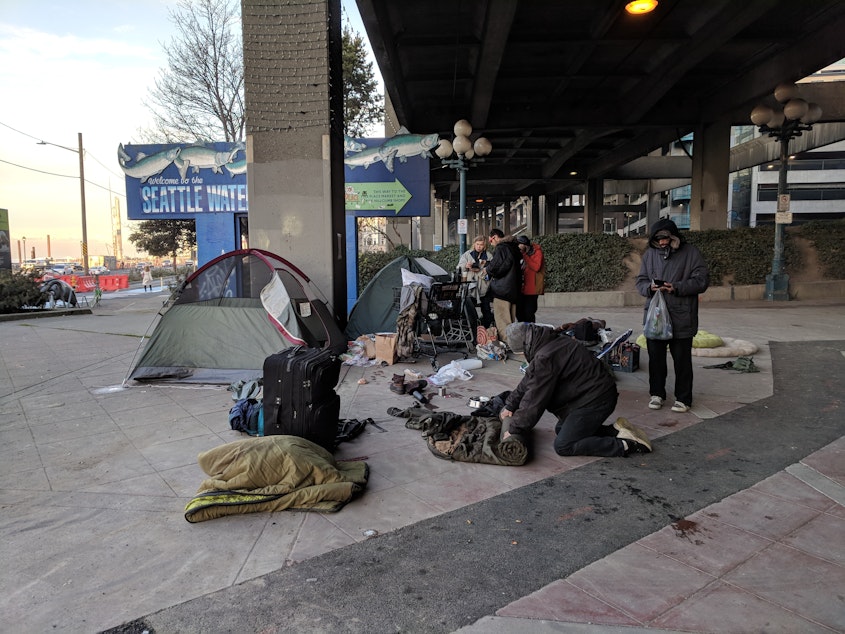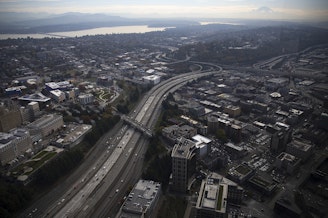The viaduct covered homeless camps, but now those have to go

As Seattle prepares for the Alaskan Way Viaduct to come down, drivers aren't the only ones experiencing change.
For a long time the structure, which is close to many services, has functioned as a makeshift shelter for people who are homeless. As the area turns into a construction zone, the people camping under it have to leave.
Tuesday morning, a small group of people across from the Aquarium started packing up their tents under the viaduct.
With their breath creating small puffs of mist in the crisp morning air, they rolled sleeping bags and tried to consolidate their belongings.
Kenneth Liverman was among them. He said he’s been living under the viaduct for about a month and a half.
Before that, Liverman said he was floating around, sleeping in different areas.
Sponsored

He said he came to this spot because it seemed a little safer to him and it offered some shelter from the elements.
“If you strategically place your tent you can keep the wind and the rain off you," he said.
Now that he and other campers are being told to vacate the area, Liverman isn’t sure what he’ll do. "I was just thinking about it, I don't know where I'm going to go now," he said.
The number of tents under the viaduct has been decreasing steadily since the spring, according to Will Lemke, a spokesman for the City of Seattle's homelessness response.
Sponsored
Lemke said the city has been working to clear the area for months and offering people shelter.
They’ve repeatedly removed encampments that are obstructing the public right of way, a process that can be carried out under city rules without prior warning to campers.
The city’s Navigation Team, which is in charge of doing outreach and clearing camps, is continuing their work ahead of demolition.
Liverman disappeared as Seattle Police officers who are members of the Navigation Team started approaching people Tuesday morning. But at least three others who were living in the same camp said they were interested in shelter spots.
Lemke said 68 other people have been contacted under the viaduct since June of 2018. Of those contacted, 11 accepted referrals to shelter in that time period. It's unclear where everyone else has gone.
Sponsored
At this point, it appears only a handful of tents remain under the viaduct.




